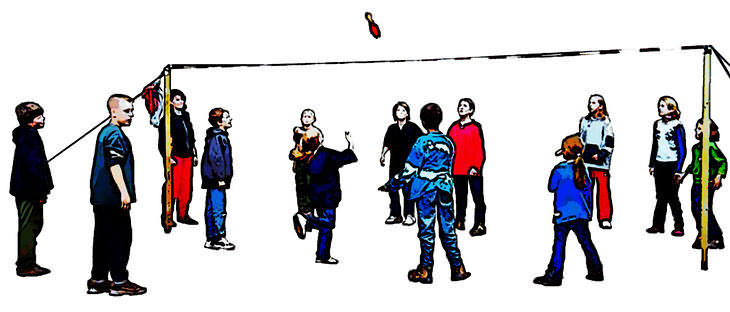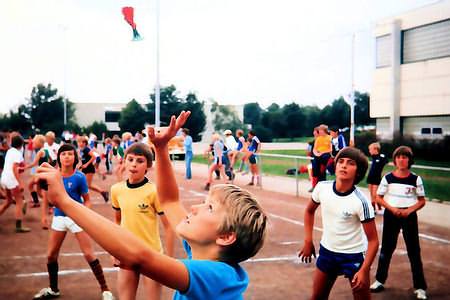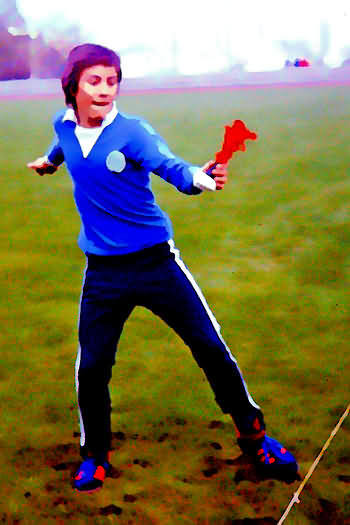source: www.youthwork-practice.com | 2000 Games, Devotions, Themes, Ideas and more for Youth Work
only for private using
Indiaca
Playing Indiaca is simply fun. Indiaca is played with the flat of the hand. The game device consists of a palm-sized padded "leather bag" with feathers stuck into it. The game probably originated in South America and was played there by the indigenous people. In South America, the game was called Peteca. From this, the name Indiaca was created. Playing Indiaca is especially widespread in the church area within the YMCA. There are numerous championship tournaments within the YMCA and the DTB (German Gymnastics Federation).

Playing Indiaca in a tournament | © www.youthwork-practice.com
Rules of playing Indiaca

Playing Indiaca in a tournament | © www.youthwork-practice.com
-
Similar to volleyball over a net (approx. 2m high)
-
Only one hand and only the flat of the hand must be used to hit the ball
-
5 field players, each field 6m wide, approx. 8m long
-
Serve from the player behind right
-
3 touches, but never 2 in a row from the same player
-
Touching is only allowed with the hand or maximum forearm
-
If a player makes a mistake, the opposing team receives a point and the right to serve.
-
When receiving the right to serve, the players within this team change their positions clockwise.
-
Set win, if one has reached 25 points, or beyond that with a maximum of 2 points distance to the opponent.
Other games with Indiaca:
Of course, Indiaca can also be used as a recreational sport to play games without a large set of rules. And because the Indiaca is small and light, it can easily be taken anywhere. There is no need for a playing field or a net. Alone, in pairs, as a small team with or without a net - it doesn't matter. With the Indiaca, you can play a few games very quickly as a gap filler. An Indiaca belongs in every game box, to every trip with children in the car or bus.
Especially for practicing, different tasks can be explored
-
Everyone stands in a circle and tries to pass the Indiaca to each other or playback and forth in pairs. How often can you pass the ball to each other without the Indiaca falling to the ground?
- Pass only from below
- Passback from below, from above
-
Or as an individual for practice: hit it up or keep it in the air as long as possible.
-
Or hit the Indiaca into a target. The more accurately it lands in the target area, the more points you get.
-
Or hit it through a small hole, similar to a goal wall but with only one hole. There are many ideas and challenges.
Even in station games, a few tasks can be incorporated with the Indiaca.

Playing Indiaca | © www.youthwork-practice.com
Skills
Why is the game so popular? It promotes team spirit, has powerful sporting components, and is versatile - actually similar to playing volleyball. The player must master different situations and moves: the serve, the serve from below, the serve from above, the smash, the block. He must react, show commitment when pouncing, and develop game strategies with his teammates. And it is here that teamwork is essential in a team sport.
Another factor that makes the Indiaca game so popular: it can be played at any age, is fun and encourages ambition to keep the Indiaca from falling to the ground. Compared to volleyball, Indiaca is light and can therefore be played well by younger children. Reaction, fine, and gross motor skills are promoted.
[ © www.youthwork-practice.com | 2000 Games and Ideas for Youth Work ]






